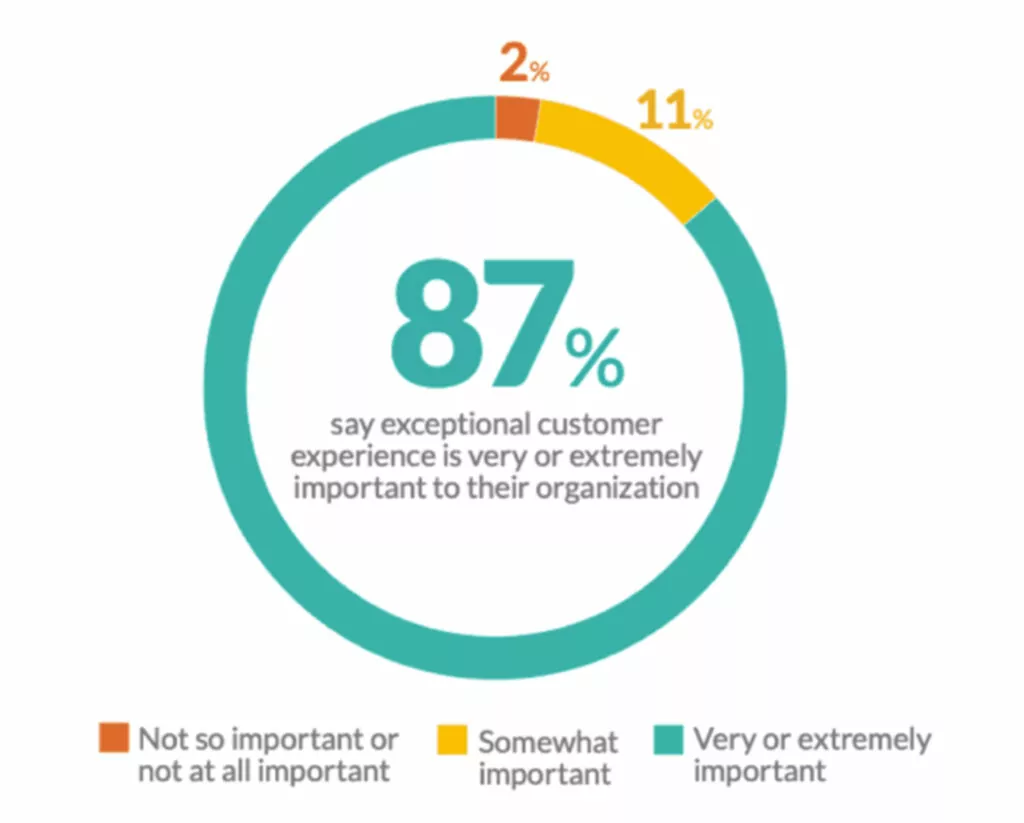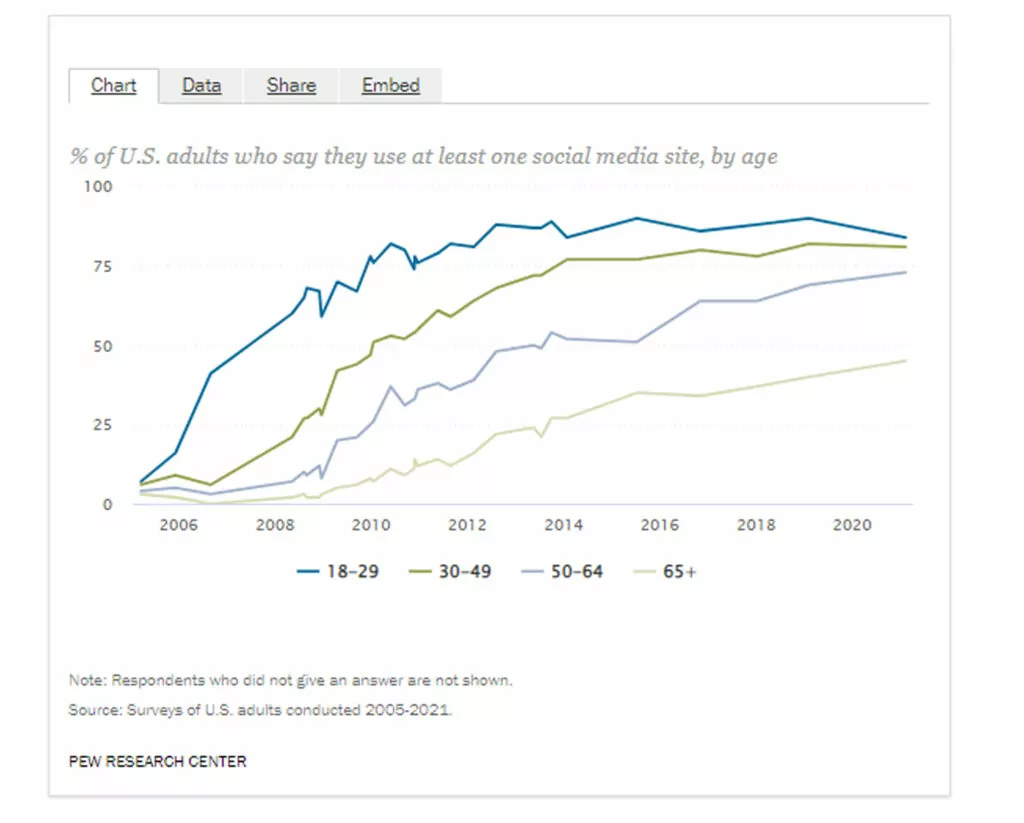Today’s consumers receive messages through several devices and across numerous channels. From text messages on smartphones to social media ads on desktops, the internet allows people to access a wealth of knowledge from any place at any time. For this reason, every digital marketing strategy should incorporate multichannel messaging to maximize audience potential.
The average person has access to more than 10 connected devices in their home. Businesses that can reach their audience with the right information at the right time through the right channel will set themselves apart from the competition and increase brand awareness. By getting your company name in front of people where they spend most of their time online (email, social sites, blogs, etc.), you increase visibility and position yourself at the front of your customer’s minds when they need a solution to their problems.
Read on to learn more about multichannel messaging and how to develop an effective strategy that drives traffic, generates revenue, and increases conversion rates.
Key Takeaways:
- Multichannel messaging enables you to deliver custom content that resonates with your audience and reaches them on their preferred platform.
- There are numerous benefits to a multichannel messaging approach, including a positive customer experience, higher customer engagement, and expanding your audience while saving money.
- Before implementing an effective multichannel messaging strategy, you must first complete three preliminary steps.
What Exactly is Multichannel Messaging?
Delivering custom content that resonates with your audience is important to building meaningful relationships with your customers. This improves customer retention, which is important because 65% of a company’s business comes from existing customers. To ensure you’re providing the most impactful message delivery, you need to incorporate multichannel messaging into your communication strategy.
Unlike multichannel marketing, which focuses on different distribution channels to promote your products and brand, multichannel messaging is all about reaching people with relevant information through their preferred digital platforms.
A multichannel approach could involve sending out a single message through:
- Text messages
- Social media posts
- Push notifications
- Web pages
Multichannel messaging is highly intentional and relies on consumer research to gain a clear understanding of your audience, their needs, and their preferences. This data will tell you what topics are important to your readers and how and when they want to receive this information. An email sent to a consumer who prefers to communicate via text may never be seen. Realizing audience preferences is key to connecting with your readers and increasing the impact of your communications.
The following video further explains multichannel messaging and things to consider to create a seamless and effective strategy:
3 Benefits of Multichannel Communication
Because multichannel marketing is so targeted, it can be especially impactful and yield optimal results. Here are three major benefits of incorporating multichannel messaging into your communications strategy.
1. Provide a Positive Customer Experience
By delivering messages through your audience’s preferred channels, you’re showing your audience that you know what they want and can cater to their needs. This allows you to provide a positive customer experience, which helps build customer loyalty and boosts visibility with better SEO rankings.
Source: Smart Insights
With multichannel messaging, you create opportunities for your audience to communicate with your company in a way that’s easy and convenient. They don’t have to search several channels to find the contact information they need to reach you with their questions or concerns. You remove frustrations and help solve their problems for a mutually beneficial relationship that results in revenue.
2. Increase Customer Engagement
The more avenues you use to reach your target audience, the more opportunities there are for customer engagement. You’ll increase likes and shares on social media, improve click-through rates, and gain more registrations. All of this helps to increase visibility and promote brand awareness since the more your audience interacts with your communications, the more their contacts will see your company name.
With your message being sent across more channels, your communications help to attract more leads. Multichannel messaging drives more traffic to your website and increases the likelihood of converting a visitor to a customer. Engagement is key to building a loyal following.
3. Build a Following while Saving Money
When you use a multichannel communication approach, you reach a wider target audience. This allows you to broaden your following with a focused effort that ensures a higher success rate. If you know a certain percentage of your audience prefers text messages, you don’t waste advertising dollars on social media ads that would go unnoticed.
Because multichannel marketing is data-driven, you can plan your communications budget accordingly and make the most of your efforts. If you see that one channel isn’t performing as well as another, adjust your strategy and redirect your focus for maximum results.
3 Steps to Developing a Multichannel Messaging Strategy
Before you can implement an effective multichannel messaging strategy, there are three steps you must first complete.
Step 1: Know Your Audience
Before you can decide on which channels to focus your efforts, you must first have a solid understanding of who your audience is and where they’re spending their time. You don’t need to invest in a channel simply because it exists and people use it. Those may not be your people. Conduct audience research to learn the demographics of your audience. This alone can help reveal the likelihood of which platforms they’re using. For instance, if your target audience is males between the ages of 25 and 35, chances are they’re on Facebook.
Source: Pew Research Center
Knowing how people prefer to receive information from the brands they like is key to creating an effective communications plan. Know your audience and reach them where they are.
Step 2: Select Your Channels
Once you know where people are likely to see your information, begin crafting messages for those channels. Some may seem cost prohibitive, but delivering a message through a channel with a higher likelihood of conversion will make up for the initial cost of the campaign. Be sure your choice of channels helps propel you toward your goals. Make decisions that are most influential for driving traffic, boosting conversions, and coinciding with other channels for a conversational, consistent message that delivers clarity in the minds of your customer.
Step 3: Tailor Each Channel’s Message
While it’s true you want to deliver a unified message across all channels, wording and tone of voice will need to be adjusted based on the channels you use. For example, social media is more laid-back, while email campaigns might need to be more professional. Although content can be different, the overall message must be consistent. Multichannel marketing allows companies to develop a more thorough communications strategy.
Create an Effective Multichannel Messaging Strategy
MXTR provides a fully managed multichannel consumer messaging platform for multi-location brands. Our platform helps you manage leads across your entire network while allowing for consistent messaging for all of your dealers. We deliver invaluable consumer insights and data that help you develop effective communications strategies that generate higher conversions.
Schedule a demo today to see how we can help you create an effective multichannel messaging strategy that yields results.
Featured Image: istockphoto









